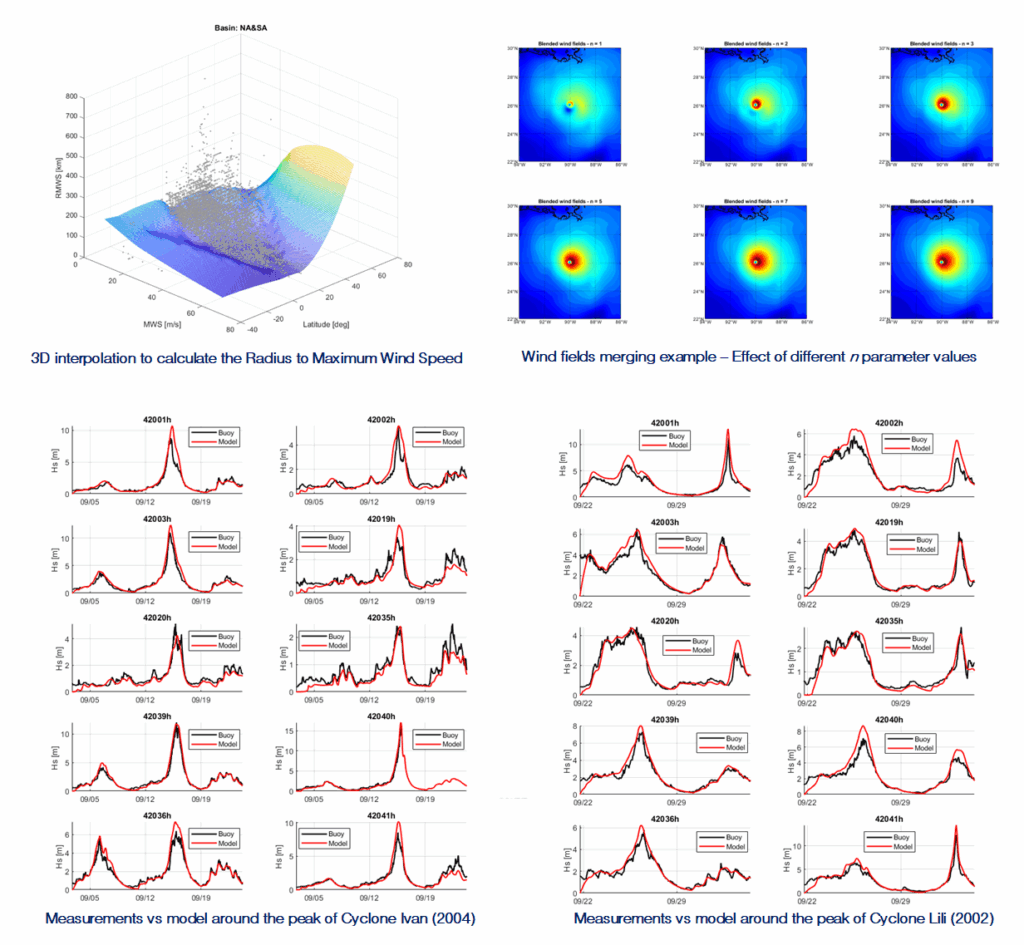Description
Cyclonic waves hindcast for several basins have been developed using SWAN wave model and freely available data. Hindcasts have been developed in the following basins: Gulf of Mexico, Arabian Sea, Bay of Bengal and Gulf of Thailand.
These data bases of cyclonic waves can be used in preliminary MetOcean studies to improve the estimations obtained with simplistic parametric model approaches.
Key features
- The following data sets have been used to set up the models:
- The cyclone track data was obtained from the International Best Tracks for Climate Stewardship (IBTrACS) database.
- Background wave and wind data was obtained from the ERA5, the fifth generation ECMWF atmospheric reanalysis of the global climate.
- Satellite measurements from GlobWave Project and NOAA’s Jason-2 and Jason-3 missions were used to calibrate the non-cyclonic model wave and wind background data.
- The coastline data was obtained from the Global Self-consistent Hierarchical High-resolution Shorelines database (GSHHS), version 2.3.7 and the bathymetry from the General Bathymetric Chart of the Oceans (GEBCO), with15 arc-second global grid resolution.
- The computational rectangular grids with 0.1 x 0.1° and 0.05×0.05° spatial resolution were created using Blue Kenue, version 3.3.4.
- Cyclonic wind fields at each time step of the storms’ tracks were calculated using Willoughby (2006) parametric model.
- The radius to maximum wind, which is not reported in the IBTrACS database, was calculated as a function of the maximum wind speed and latitude of the centre of each cyclone
- The parametric cyclonic and model background wind fields were merged using a weighing factor “n”
- 17 model set ups (with varying n factor, model parametrization and input wind maps) were used to simulate cyclones Ivan (2004) and Lilli (2002) and the results were compared against measurements from 10 buoys across the Gulf of Mexico to select the best set up.



